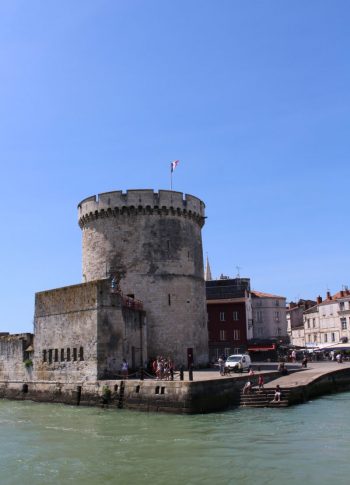Ile de Ré is located on the west coast of France, in the middle of the Atlantic coast, off the coast of Charente-Maritime and in the south of the Vendée, opposite the port of La Rochelle, and 1.7 km as close as possible to the continent. Its area is approximately 85 km2, which makes it the fourth island of metropolitan France, far behind Corsica (8,680 km2), and close to the island of Oléron (174 km2) and Belle-Ile ( 85.63 km2). The island has an isthmus: the Martray. Very narrow, it is only 0.33 km wide and separates the Fier d’Ars, a bay to the north, from the Antioch sluice, to the south. The relief of the island is generally flat and the highest point is at Peu-des-Aumonts1, a locality in the commune of Bois-Plage-en-Ré, at an altitude of 20 meters.
Île de Ré in Charente-Maritime
At its eastern end, in the town of Rivedoux-Plage, at the tip of Sablanceaux, the island is connected to the mainland at La Repentie / La Pallice by the Ile de Ré Bridge, three kilometers long and inaugurated on 19 May 1988. The Lilleau des Niges National Nature Reserve is located in the north of the island. Tens of thousands of migratory birds pass through it each year (geese and ducks in winter, bluethroat and common terns in spring) but also shelducks, egrets…
A few kilometers away, the state forests of Trousse-Chemise, Lizay, Combe-à-L’eau and Bois Henri IV bordered by beaches bordered by dunes reveal a flora typical of dune environments (flaxseed, beach carnations ). Maritime pines and holm oaks shelter, in the undergrowth, plants characteristic of the scrubland and scrubland of the Mediterranean region. Located a little away on the island, in La Couarde, Loix and Ars-en-Ré, the retais salt marshes also hide a specific flora of the marshes: salicornia, statice or sea lavender, black mustard. Windy and exposed to the Atlantic swell, the island offers many places for surfing and windsurfing, including the Grenettes spot. Many sports are practiced on the island, with a predominance of water sports such as sailing but also: Surfing, windsurfing, kitesurfing; the geographical condition of the island ensures wind and waves all year round. Sailing is practiced in the French Sailing Schools or the yacht clubs of La Flotte, Ars or Saint-Martin-de-Ré, which organize many regattas, Some nautical bases are very active such as La Flotte, Rivedoux-Plage , La Couarde, Ars or Les Portes.
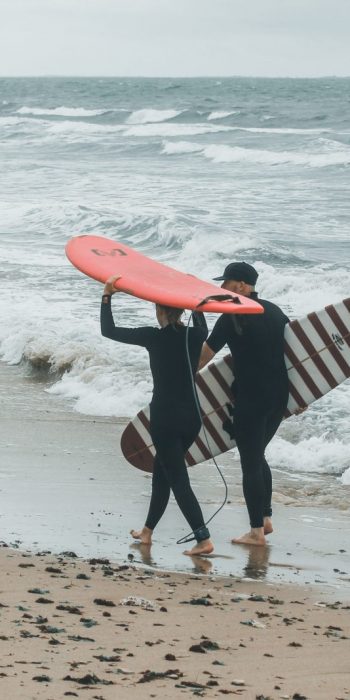
La Couarde-sur-Mer, Île de Ré en Charente-Maritime
You are in the heart of the Île de Ré, in the heart of all the lands. Come and discover La Couarde-sur-Mer, all the charm and authenticity of Ré la blanche are united here! Through its incredible labyrinth of flowery alleys, this village will delight you with its privileged location in the heart of the Île de Ré, the ideal starting point for all your bike rides. During your getaway, do not forget to make a detour to the bandstand, located at the foot of the church, where you can attend many concerts throughout the summer.
In the North you will find the salt tides with a wilder area. The Goisil Channel, a very picturesque and bucolic little port, has inspired and continues to inspire many painters and photographers. Despite the current merger of the four original islands, La Couarde is still a pivotal village on the Île de Ré. It is there, on the northern coast of the territory of Couard, between the Moulinatte and the Martray, that we meet the first landscapes of saltworks, heralding the salty soil that characterizes the north of the island.
In the “behind” of the village, many remains of mills and old residences (Les Marattes, Les Prises, La Davière…) bear witness to a rich historical past and a flourishing economic activity based on the exploitation of the marshes, salt and vine. Today, if the main activity remains viticulture, oyster farming has also developed considerably on the wide foreshore of Fosse-de-Loix and the cove of Martray.
To the south, behind the dunes lined with pines and tamarinds, stretches an immense beach of fine sand. From Les Prises beach to Follies beach, it is a single stretch of sand over 5 km long, where all seaside and water activities are available: sailing, kite surfing, jet skiing, water skiing, stand up paddle boarding, fishing on foot or even lazing around … La Pergola beach is a surf spot referenced by surfers around the world! From the campsite you will find 2 accesses to Peu Ragot beach where you have the surf school of Antoine Albeau, world champion in Windsurfing.
A coastal path, built along the dune, will allow you to walk along the beach with a breathtaking view of the Antioch sluice. Thanks to the extent of its beaches, “the bathers’ gold” contributed to making La Couarde at the very beginning of the 20th century, the first renowned seaside resort on the Ile de Ré. As far back as we can go in the archives, the village of La Couarde is mentioned as early as the Middle Ages as marking the limit of the “barony”, that is to say the western end of the fiefs of the lords of Mauleon.
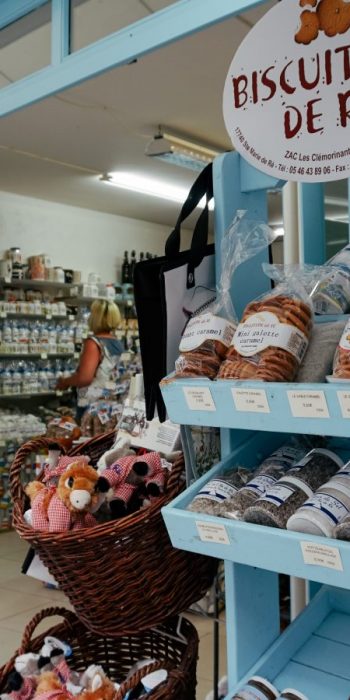
Sortie en Bateau (Fort Boyard, Ile d’Aix, Ile Madame)
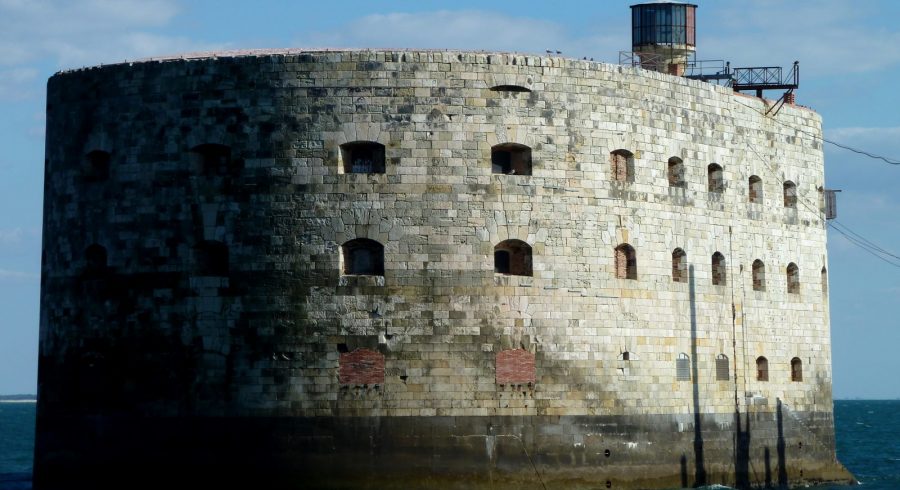
Fort Boyard
Discover Fort Boyard and the islands of Charente-Maritime!
Fort Boyard is a fortification located on a shoal formed by a sandbank originally, called the “longe de Boyard” which is discovered at low tide and is located between the island of Aix to the north-east, Ile d’Oléron to the south-west, with Ile Madame to the south-east and Ile de Ré to the north, belonging to the Charente archipelago. It has been listed as a historic monument since 1950. If the construction of a defensive device on the “Boyard’s loin” was envisaged as early as the 17th century, the project did not materialize until later in the year. XIXth century. Built to protect the harbor, the mouth of the Charente, the port and especially the large arsenal of Rochefort from the assaults of the English navy, it was transformed into a prison barely a few years after its completion. Nicknamed “strong of the useless” by the local population during its long period of abandonment1,2,3, the building is, from now on, mainly known in the whole world thanks to the televised game of the same name, filmed on site since 1990.
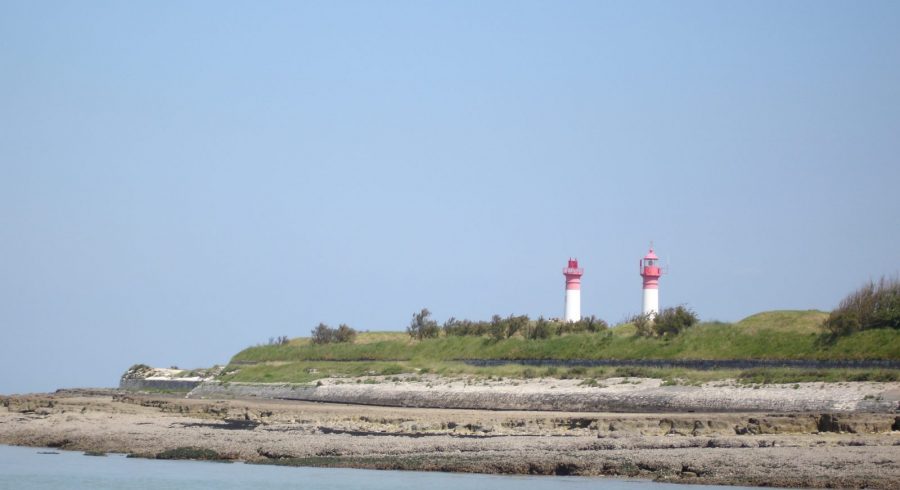
Ile d’Aix
Take a boat and make a stopover on the Ile d’Aix: It is after a short 20-minute boat trip (from Fouras) that you will disembark on a charming crescent-shaped island: the Ile d ‘ Aix. You will stroll through this privileged and unspoiled place of nature on foot (3 hours will be enough to go around it). Even if the history of the island of Aix is rich in all the great men who have set foot on its soil, it is clear that the emperor’s shadow is still present everywhere. Napoleon, the man with his hand on his heart, spent his last three days on French soil before his exile on Saint Helena. From this past, Aix preserves an impressive number of vestiges: Fort Liédot, Place d’Austerlitz, rue Napoléon and of course, the breathtaking view of Fort Boyard … you can see Fort Boyard, Île d’Oléron or the Ile de Ré. And it’s impossible to leave without a photo of the twin lighthouses, symbols of the island, otherwise you won’t believe you have come to visit the Ile d’Aix!

Ile Madame
Ile Madame : Visitors looking for unspoiled and unspoiled nature will opt directly for the smallest island of Charente Maritime: Ile Madame, which is only 800m long and 600m wide. A small peculiarity, however, since the island is only accessible at low tide. You will then take the Passe-aux-Boeufs, a pretty ribbon of sand and pebbles of 1 kilometer which becomes impracticable as soon as the sea rises… Watch out for tide times! Once there, it’s very easy to find your bearings since this island of Charente Maritime has only one road, which circles it. As soon as you arrive on the island, you will be seduced by the silhouette of the colorful squares that welcome you. What a pleasure to smell the salty air and the sound of the wind during this walk which will take you 2 short hours on foot. On your way, you will come across the fort built in 1703 in defense of the English invasions, small wild coves, a sandy beach in the south of the island and exceptional panoramas over the Charente estuary. In your field of vision: Fouras-les-Bains, the islands of Aix, Ré and Oléron, not to mention the mythical Fort Boyard.
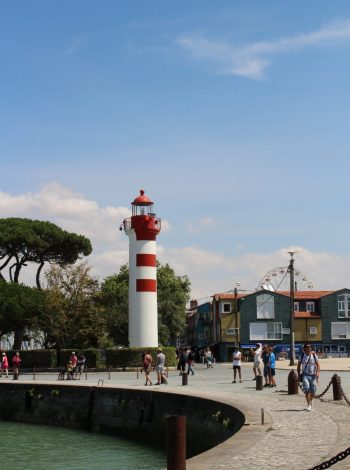
La Rochelle
Located on the edge of the Atlantic Ocean, off the Pertuis d’Antioche, and protected from storms by the “barrier” of the islands of Ré, Oléron and Aix, the city is above all a first-rate port complex, and this since the 12th century. It is in fact an “Ocean Gate” by the presence of its three ports (fishing, trade and pleasure). City of strong commercial tradition, its port was active from its origins and experienced significant development during the classical period Note 1, then in the contemporary period thanks to the port site of La Pallice which is the only deep-water port on the French Atlantic coast and He now ranks sixth nationally.
Fortified city on the sea and on the land, La Rochelle has many defense monuments, the best known of which are the medieval towers of the Old Port. At the tip of the Minimes is the lighthouse at the end of the world, a replica of the famous lighthouse at the end of the world erected on the Isle of the States off Cape Horn in 1884, and which inspired Jules Verne for his novel Le Phare du bout du monde (Lighthouse at the End of the World).
The La Rochelle aquarium, initially located in the “wooden city” district, then transferred to the Port des Minimes after the 1986 fire, has been located in the heart of the city, in the Gabut district since 2001. It is one of the largest European aquariums. Some 10,000 animals from the four corners of the planet sharing the 3,000 m3 of seawater spread over 65 basins where the natural habitats of species from all the oceans and seas of the world are recreated.
You can also spend a day shopping in La Rochelle; in fact you will find a variety of stores (ready-to-wear, designer, jewelry, accessories, souvenirs, books, beauty, etc.) Diversity and singularity characterize the signs in the shopping streets.
